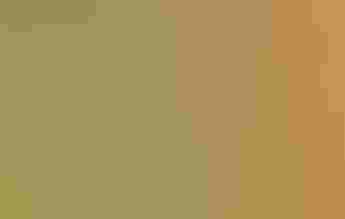
It’s the universal plight of the city dweller: too much glass and concrete and not enough green. That’s where container gardens come in. Given that pots and planters come in many shapes and sizes, container gardens are easy to fit in tight spaces, from window boxes and hanging baskets to perches on stoops and railings.
Containers do have their limitations; for one, they’re too small to hold the shrubs and trees that birds use for nesting. Still, there are plenty of plants that will fit in a pot and also provide seeds, fruit, or insects for birds to eat. And with a little planning, you can have something ready to go in time for spring migration. Here’s how to get started.
Get to Know Your Local Plants
Before you get your hands dirty, find out which plants are native to your neighborhood using ‘ľŇŕ ”∆Ķ‚Äôs native-plants database. Pop in your zip code to pull up an initial list of plants, and narrow it down using the available filters. Select the ‚ÄúAnnuals/Perennials‚ÄĚ plant-type filter, given that most of the database‚Äôs smaller plants will fall under that category. The ‚ÄúBest Results‚ÄĚ tab is especially useful, as it displays only those plants that can be found at a nearby nursery or garden store.
If you‚Äôre designing a garden with birds in mind, there are a few widespread plant families you can use to narrow your search. Sunflowers feed birds like goldfinches and siskins, while also brightening your home with sunny blooms. Milkweeds feed hummingbirds, along with a host of insects beloved by birds. Honeysuckles are nectar hotspots, and their fall and winter berries attract species like Purple Finches and Hermit Thrushes. And penstemon plants offer tiny seeds to a range of bird species. If you have a soft spot for a particular type of bird, you can identify plants that feed those species using the ‚ÄúAttracts‚ÄĚ filter in the database.
Study Your Space
Before selecting your final plant list, you need to get a sense of your space‚Äôs constraints and advantages. For plants, . Spend a clear day checking on your future garden every hour or two‚ÄĒmaybe even taking photographs or sketches‚ÄĒto document which areas receive light and shade as the sun moves across the sky. This is especially important if you live in a dense area with tall buildings or fences that block the sun.
You can make use of the darker spots, too, by opting for species that thrive in shade. For areas that soak up a lot of rays, plan to choose sun-loving plants, like those that normally grow in meadows. In shady situations, select plants that are sensitive to heavy sun, like those that grow in forest understories. Also find out how tall your plants can grow, and whether they will shade out neighboring vegetation. Then, map accordingly.
Design for Your Eyes
You probably aren’t getting into gardening just for the birds, so be sure to think about how you want your container garden to look. Maybe you want bright flowers, or maybe you’re more into a minimalist style. Perhaps you want to go tall to screen out your neighbors, or maybe you need short plants for a window box that won’t block your view. Incorporate these aesthetic choices into your map.
You‚Äôll also want to mix different types of plants to keep the space interesting. This idea holds for growing multiple plants in the same pot, if space allows. A good principle for designing beautiful individual containers is: ‚Äúthriller, filler, spiller.‚ÄĚ First, pick something that grows tall and showy; then, add something that fills the horizontal space of the container; and bottom it out with something that spills over the sides. A mix of foliage types and flowering times will keep your garden verdant week after week. Your local , nursery, or may have suggestions for combinations that shine.
Don‚Äôt forget to strategize when picking your containers. You can garden in plain old terracotta pots, of course, or you can spice it up with buckets, old coffee sacks, crates‚ÄĒpractically anything that will hold soil. (You might need to punch a few holes to allow for drainage.) Some native plants from drier regions might have longer roots to store water, so they‚Äôll do better in a deep pot than a shallow one.
Find a Local Expert
Just like any other new adventure, growing native plants in pots for the first time can be challenging. It’s a good idea to find resources that can help you along the way. For starters, there are countless gardening books to answer basic questions. If you’re more of a physical learner, libraries, horticultural societies, and other community spaces might offer gardening workshops or meet-ups.
Staff at local nurseries that sell native plants can be particularly helpful. They can guide you to species that grow well in containers, offer advice on soil type and watering, and troubleshoot if you run into any problems.
Dig In
Once you’ve chosen your plants, get your dirt, seeds, and plants and get digging. Water your plants regularly, as the small volume of soil in containers tends to hold less moisture (plants exposed to intense sunlight may need to be watered multiple times a day). Most importantly, be prepared for a little trial and error. You may want to start small and see which plants thrive before you buy out the nursery.
In short: Know what you want from your space and how you plan to use it, ask for advice from local native-plant experts, and be ready to experiment. Then, dust off your green thumb and wait for the birds to discover your new garden.

